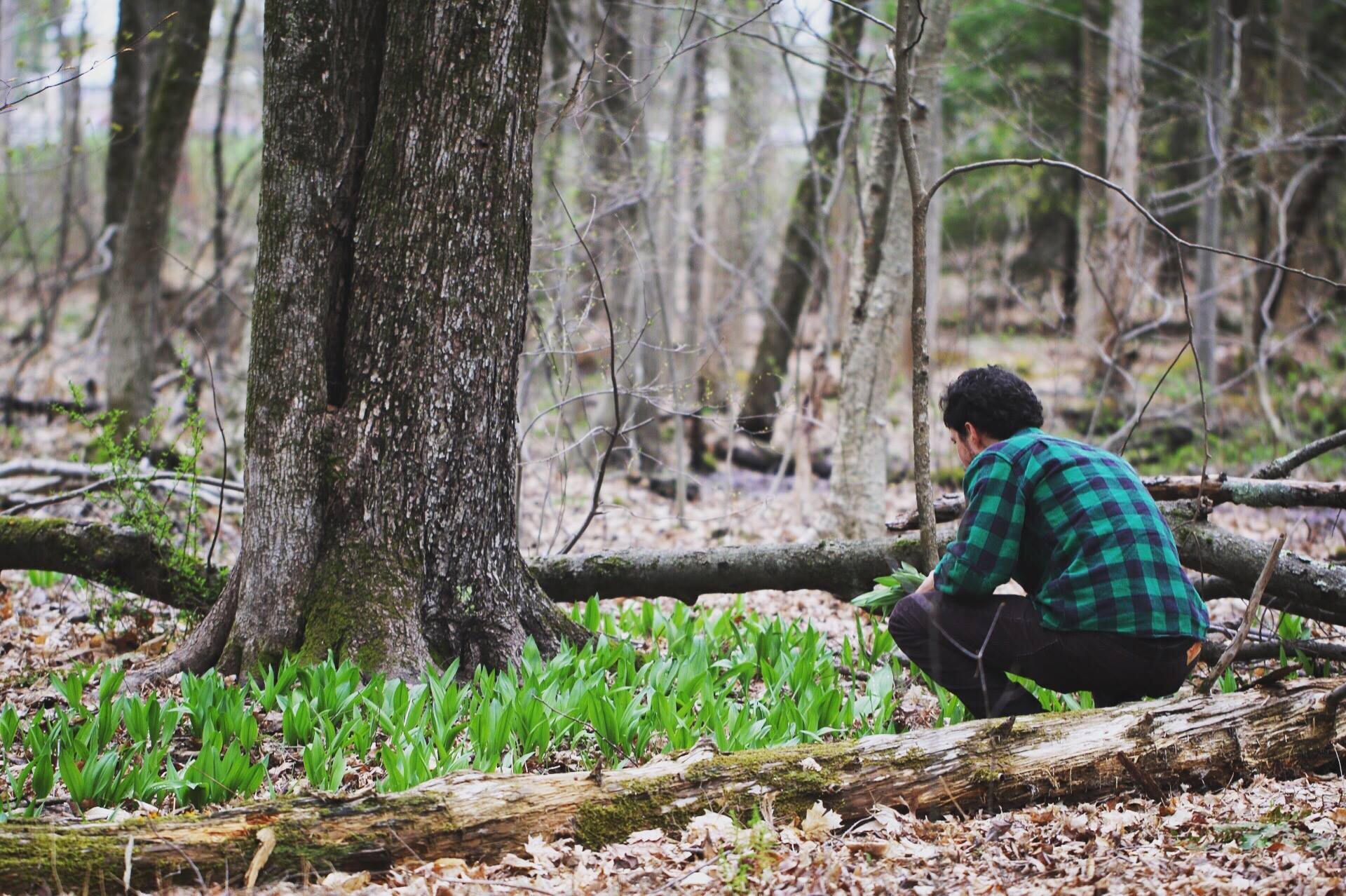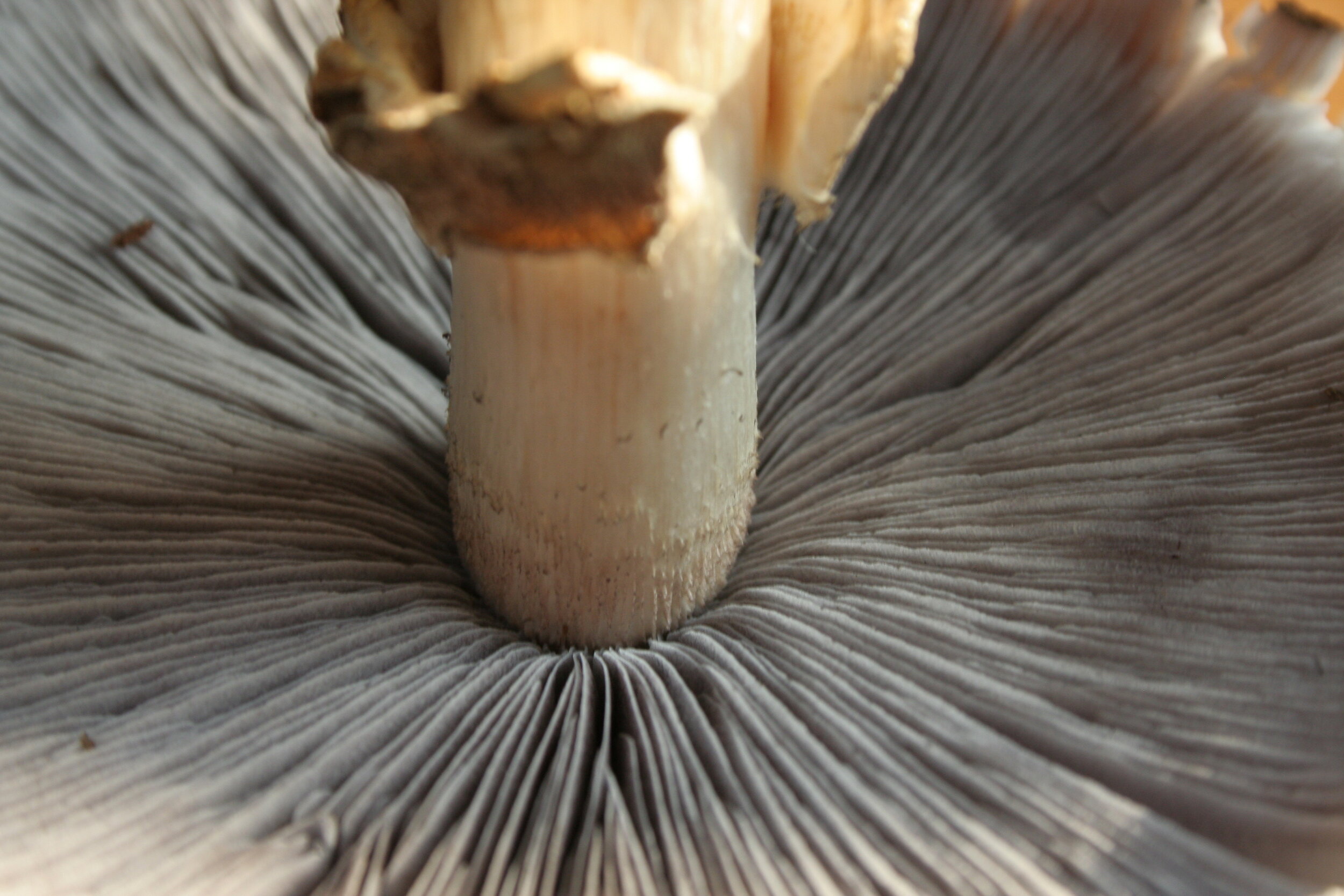
Blog
Fall's Fleeting Mycological Treasures
Camouflaged among the freshly fallen maple leaves, autumn mushrooms are thriving in the wet woods. The long-awaited rains - slow, steady, and abundant - arrived just before a looming frost that threatens to put the mushrooms to bed for the season.
Maitake on the Autumnal Equinox
My heart sank as I reached the crest of the hill to find my most faithful maitake (hen of the woods) tree standing naked, unadorned. After a summer plagued by drought, I had grown accustomed to such disappointment. But the successful hunter is an eternal optimist, always seeing potential in every fiber of the forest. We’d finally gotten a half-inch of rain, and it couldn’t hurt to get down on my hands and knees and scour for signs of hen.
Forest to Highchair Cuisine
My daughter, at two-years-old, already understands where her favorite food comes from. “Papa, hunt mauk-mee,” (mushrooms) she says. “Hike.”
How can I resist? I take her in one arm, paper bag and mushroom knife in the other, and we hit the trails behind our house just before sunset.
Mountain Kings
As I entered the woods with my childhood best friend on my 30th birthday backpacking adventure, my attention was fixed on the ground as we followed a languorous river. Lipstick-red, vomit-inducing emetic Russulas lined the trailside, and acrid peppery milkies were sprayed about the flat forest floor. Deadly destroying angels were everywhere, menacingly elegant and dangerous. Yet a three-mile, flat riverside walk into the backcountry did not reveal a single gourmet mushroom, and the soil seemed drier with each step.
The Ox Tongue on the Oak Tree
Like a crimson tongue shooting up from the scorched earth, scouring for moisture, the beefsteak polypore commanded my attention. Also called the ox tongue, the beefsteak (Fistulina hepatica) is a beguilingly beautiful polypore that I almost never find, let alone on a bone-dry August afternoon
Veins of Golden Chanterelles
The forest is flush with veins of gold that cut through dark hemlock stands and weave their way around towering spruce. A week of powerful afternoon thunderstorms broke the early July dry spell, receding to reveal a bumper crop of chanterelles flanked by porcini. Watch your step, because lobsters are lurking underfoot, and baby black trumpets are sprouting between the beech trees. The slugs have already arrived at the great woodland feast, and I invite you to join them!
Chanterelles, Boletes and their Brethren
It rains as I write, a good slow and steady soak that is sure to summon great flushes of gourmet and medicinal fungi. After a dry start to the summer season, golden chanterelles and boletes – from painted to porcini – are poking their familiar faces up from the warm July soil.
Mountains of Morels
It was 11am, and our morel count for the day had already topped 300. We were not hunting the mighty burns out West, nor were we in the Midwest’s exceptionally fertile morel grounds. My guide, a gracious and seasoned hunter with a keen instinct towards ecological patterns, had led me to a mystery Vermont morel motherlode.
Morel Mind
It is the ultimate forager’s dilemma. After miles of hunting, you spot your first morel of the season, a pristine yellow. You yelp gleefully, smile uncontrollably, reach down to feel its cool flesh in your palm. You reach for your pocketknife as you prepare to harvest it from the sandy spring soil.
Morels in the Month of May
With only a sliver of sunlight left in the sky, I head for the hills in search of spring’s most coveted wild delicacy. Soon I find myself on hand and knee, scouring the soil beneath a giant ash as my setter howls madly into the twilight. I see a morel menagerie - plump and pickable blacks, yellows, and half-frees - in my mind’s eye, but my fingers find only leaf litter and hollowed acorns on the forest floor. I am hunting with my hands as much as my eyes, as the day grows dim and a silver crescent rises in the mid-May sky.
Rejuvenating Reishi Ginger Tea
A fresh coat of snow has fallen upon last fall’s forgotten reishi (Ganoderma tsugae). Clinging to the thick trunks of hemlock trees, these eye-catching, medicinal polypores are the rotting reminders of a prodigious crop. Reishi mushrooms become unusable with the first hard frost, sometimes going rancid as early as June when the slugs and beetles have their way.
blog archive by year:











